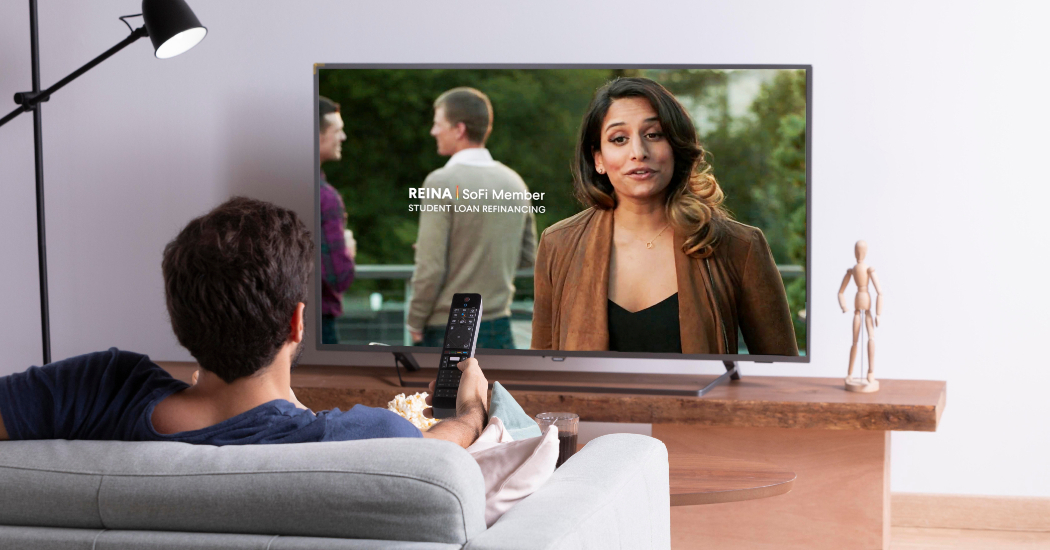A Guide to Direct Response Marketing

You’re scrolling through your phone at midnight, half-distracted, half-bored. Then bam… a headline grabs you: “Get 50% Off Your First Order—Tonight Only.” There’s a countdown timer, a bold CTA button, and your curiosity spikes. You click.
That’s direct response marketing working exactly as it should: sharp, immediate, and designed to make you take action now.
But there’s more to it than a flashy discount and a ticking clock. Done right, direct response marketing combines psychology, precise targeting, and clear messaging into one deceptively simple package. Whether you’re a startup trying to generate quick traction or a seasoned brand pushing a product drop, understanding this strategy can unlock faster results and measurable returns.
What Is Direct Response Marketing?
Direct response marketing is a strategy designed to elicit a specific, immediate action from the audience. It’s not about the long game of brand awareness or planting seeds for future loyalty. It’s about prompting people to click, sign up, download, buy, or call—right now.
The hallmark is a clear call to action paired with a compelling offer. Think:
- “Sign up to get your free sample.”
- “Download the guide instantly.”
- “Text ‘JOIN’ to receive your exclusive code.”
This style of marketing thrives in performance-driven environments—places where metrics matter, and every dollar has to pull its weight.
Core Elements of a Direct Response Campaign
To hit home, direct response marketing relies on a few essential building blocks:
A Strong CTA: This is the “what now?” Without it, people scroll past. The CTA needs to be obvious, urgent, and unmissable.
An Irresistible Offer: Offers with scarcity (only 10 left), urgency (expires in 3 hours), or value (free shipping + 20% off) create pressure to act.
Targeted Messaging: Broad strokes won’t cut it. You’re speaking to a specific segment with specific needs. Context matters.
Trackability: Every response can (and should) be measured. Whether it’s clicks, form submissions, or purchases, the data should tell a story.
These ingredients may sound simple, but the magic happens in how you mix them.
Why Direct Response Works
Some marketing strategies build awareness. Others build momentum. Direct response builds action.
That’s its superpower. It’s immediate, trackable, and offers rapid feedback. You launch a campaign, and within hours—or even minutes—you know what’s resonating and what’s not.
Even better, it’s often budget-friendly. Smaller brands or niche businesses can compete effectively without needing a million-dollar media buy. Direct response rewards smart strategy over brute force.
And let’s be honest. Humans are emotional creatures. Time-sensitive offers, curiosity-driven headlines, and crystal-clear benefits speak to our impulse to do something now.
Direct Response vs. Brand Marketing
Direct response and brand marketing aren’t opposing forces. They’re different tools in the same toolbox.
Brand marketing builds trust, recognition, and long-term loyalty. It’s why you think of Nike when you need new running shoes even when you’re not being sold to directly.
Direct response, on the other hand, is the closer. It’s the limited-time coupon. The demo request form. The downloadable checklist.
Here’s the distinction: Brand marketing plants the seed. Direct response picks the fruit.
Smart marketers know when to use each and how to make them work together.
Best Channels for Direct Response Marketing
Direct response isn’t limited to one platform. It thrives across mediums, adapting to the way people consume content today. Some of the most effective channels include:
- Email Marketing: Still one of the highest ROI channels. Perfect for personalized, segmented offers.
- Paid Social (Facebook, Instagram, TikTok): Scroll-stopping creative and hyper-targeting make these ideal for action-driven campaigns.
- SMS Texting: High open rates and directness. Great for flash sales, event reminders, and exclusive offers.
- Search Ads (Google PPC): Capture people at the moment of intent. Perfect for urgency-based copy.
- Direct Mail: Yes, it still works—especially with QR codes or unique promo codes for tracking.
- Streaming Platforms with Interactive Ads: A growing space where CTAs can be clicked with a remote. Think of connected TV as digital’s newest frontier.
Tips For High-Converting Direct Response Campaigns
If your campaign feels like a shout into the void—little to no clicks, zero conversions—something’s off. Maybe it’s the message. Maybe it’s the timing. Either way, it’s fixable. Here’s how to start turning eyeballs into action:
Lead with Emotion (Not Logic)
Humans may justify with logic, but we act on emotion. That’s where the click happens. The purchase. The opt-in.
So before you draft another headline or write that CTA button, ask: What’s the emotional trigger here?
- Fear of missing out: “Only 5 spots left.”
- Relief: “Cancel anytime—no strings attached.”
- Excitement: “Your exclusive invite is here.”
- Curiosity: “See why 30,000 people downloaded this last week.”
And no, you don’t need dramatic flair. Even a touch of emotional intelligence in your copy can shift the tone from flat to compelling. Empathize with the pain point. Validate the desire. Then offer a way forward.
Make the CTA Unmistakable
Think of your call to action like a neon sign in a crowded street. It needs to stand out. Too many marketers hide it in vague copy or push it to the bottom like an afterthought.
Avoid weak CTAs: “Learn more.” “Click here.” “Submit.” Instead, be specific, urgent, and benefit-driven:
- “Start your free trial now.”
- “Book your 15-minute demo.”
- “Claim your bonus before midnight.”
Make it pop visually. Design and copy should work together to say one thing clearly: “This is the next step.”
Streamline the User Journey
Even the best offer falls flat if the journey feels like a maze. People don’t have patience for clunky forms, disjointed flows, or slow-loading pages.
Audit your experience from the first ad view to the final conversion. Where do people drop off? Where might they hesitate?
A few quick wins:
- Cut unnecessary form fields (do you really need their company name and fax number?)
- Use clean, mobile-optimized landing pages (most users will be on their phones)
- Remove distractions (navigation bars, extra CTAs, irrelevant content)
- Keep the message aligned across every step—if the ad promises a free trial, don’t bury the terms on the second page
Friction kills conversions. Your job is to clear the path.
Test Everything
What looks “good” is subjective. What converts is in the data.
A headline tweak can boost clicks by 20%. A button color change can drop your bounce rate. Testing removes the guesswork and reveals what your audience actually responds to.
Start simple:
- Headlines: Emotional vs. benefit-driven vs. curiosity-based
- CTA placement: Top of page vs. after scrolling
- Button design: Rounded vs. square, red vs. blue, text-only vs. icon-enhanced
- Visuals: Stock imagery vs. product shots vs. user-generated content
Don’t change five things at once. Isolate variables. Run A/B tests. Document your results.
Use Scarcity and Urgency—But Only If It’s Real
Scarcity (only 3 left) and urgency (sale ends tonight) are powerful levers but only when they’re authentic.
Consumers are savvier than ever. Fake countdown timers and recycled “limited-time offers” only erode trust. Use urgency ethically by anchoring it in something real:
- Inventory that’s actually limited
- A live webinar with a fixed start time
- A launch window that won’t open again
Time-based triggers work because they nudge action. But manipulation backfires. People don’t like to feel tricked—they want to feel smart for acting fast.
Clarity Beats Cleverness
There’s a time and place for clever copy. Your CTA? Probably not it.
Direct response is a battlefield where clarity wins the war. Your reader should understand at a glance what you’re offering, why it matters, and what to do next.
That means:
- No jargon
- No riddles
- No 17-syllable metaphors that “sound cool” but confuse the intent
You’re not trying to impress. You’re trying to convert. That said, simplicity doesn’t mean boring. It means being impossible to misunderstand.
A high-converting campaign doesn’t need to be flashy. It should resonate, guide, and convert one action at a time. Keep the emotion up front, the offer tight, and the journey frictionless. That’s how you stop shouting into the void and start hearing the sweet sound of “conversion complete.”
Common Mistakes to Avoid
Even seasoned marketers fall into these traps:
- Vague CTAs: Be specific.
- Overcomplicating the offer: If your reader has to decode what they’re getting, they’ll leave.
- Too many distractions: Stick to one goal per campaign. Don’t ask for a signup, a share, a follow, and a download all at once.
- No follow-up: One touchpoint won’t cut it. Retarget, email, re-engage.
Mistakes happen. But the beauty of direct response is how quickly you can recover.
How to Measure Success
You can’t improve what you don’t measure. Thankfully, direct response thrives on data.
Track metrics like:
- Click-Through Rate (CTR)
- Conversion Rate
- Cost Per Acquisition (CPA)
- Return on Ad Spend (ROAS)
Use UTM tracking. Connect your CRM. Sync your data sources. Every response paints a clearer picture of your audience and what they want from you.
Direct response marketing is sharp, scrappy, and unapologetically action-focused. It strips away the fluff and gets to the heart of what works: a great offer, a clear message, and a nudge to act now not later.
So whether you’re kicking off your first campaign or optimizing your 20th, the same principle applies: make it count, make it measurable, and always make it clear.
